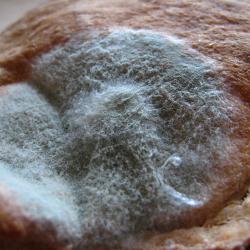Source Institutions
Source Institutions
Add to list Go to activity
Activity link broken? See if it's at the internet archive

In this laboratory activity, learners design an experiment to evaluate how environmental factors influence the growth of molds. Suggested questions to investigate include: (1) Does mold grow faster at cold temperatures or at warm temperatures? (2) Does mold grow faster in the light or in the dark? (3) Can mold grow on a substance that does not contain water? Young learners would have fun with this activity, but would need help completing the charts. All learners should get adult permission before doing this activity, since some people are allergic to mold.
- 1 to 2 hours
- 1 to 7 days
- $5 - $10 per group of students
- Ages 11 - 18
- Activity, Experiment/Lab Activity
- English
Quick Guide
Materials List (per group of students)
- plain gelatin powder (contains protein)
- flavored Jell-O powder (contains similar protein plus sugar and flavoring)
- water
- sugar
- mold from bread, cheese, etc.
- small paper or plastic cups (minimum of 4 cups per group)
- clean Q-tips (for transferring mold)
- aluminum foil
- plastic wrap
- rubberbands
- sharpie (to label cups)
- magnifying glasses to observe mold (1 or 2 per group)
- poster board
- poster markers
Subjects
-
Life Sciences
-
Cells
- Cell Metabolism
-
Diversity of Life
- Viruses and Bacteria
-
Ecology
- Ecosystems
-
Cells
-
Mathematics
-
Data Analysis and Probability
- Data Collection
- Data Representation
-
Data Analysis and Probability
-
Physical Sciences
-
Heat and Thermodynamics
- Heat and Temperature
-
Vibration and Waves
- Light and Optics
-
Light and Optics
- Sunlight and Color
-
Heat and Thermodynamics
-
The Nature of Science
-
The Scientific Process
- About Inquiry
- Asking Questions
- Conducting Investigations
- Gathering Data
- Formulating Explanations
- Communicating Results
-
The Scientific Process
Informal Categories
- Food and Cooking
Audience
To use this activity, learners need to:
- see
- see color
- read
- touch
Learning styles supported:
- Involves teamwork and communication skills
- Involves hands-on or lab activities
Other
Components that are part of this resource:
This resource is part of:
Access Rights:
- Free access
By:
- Waldron, Ingrid ; Pohlschroder, Mecky ; Doherty, Jennifer
Rights:
- All rights reserved, Dr. Ingrid Waldron, Dr. Mecky Pohlschroder, and Jennifer Doherty, Dept. Biology, University of Pennsylvania, 2004
Funding Sources:
- HHMI
- Bryn Mawr College
